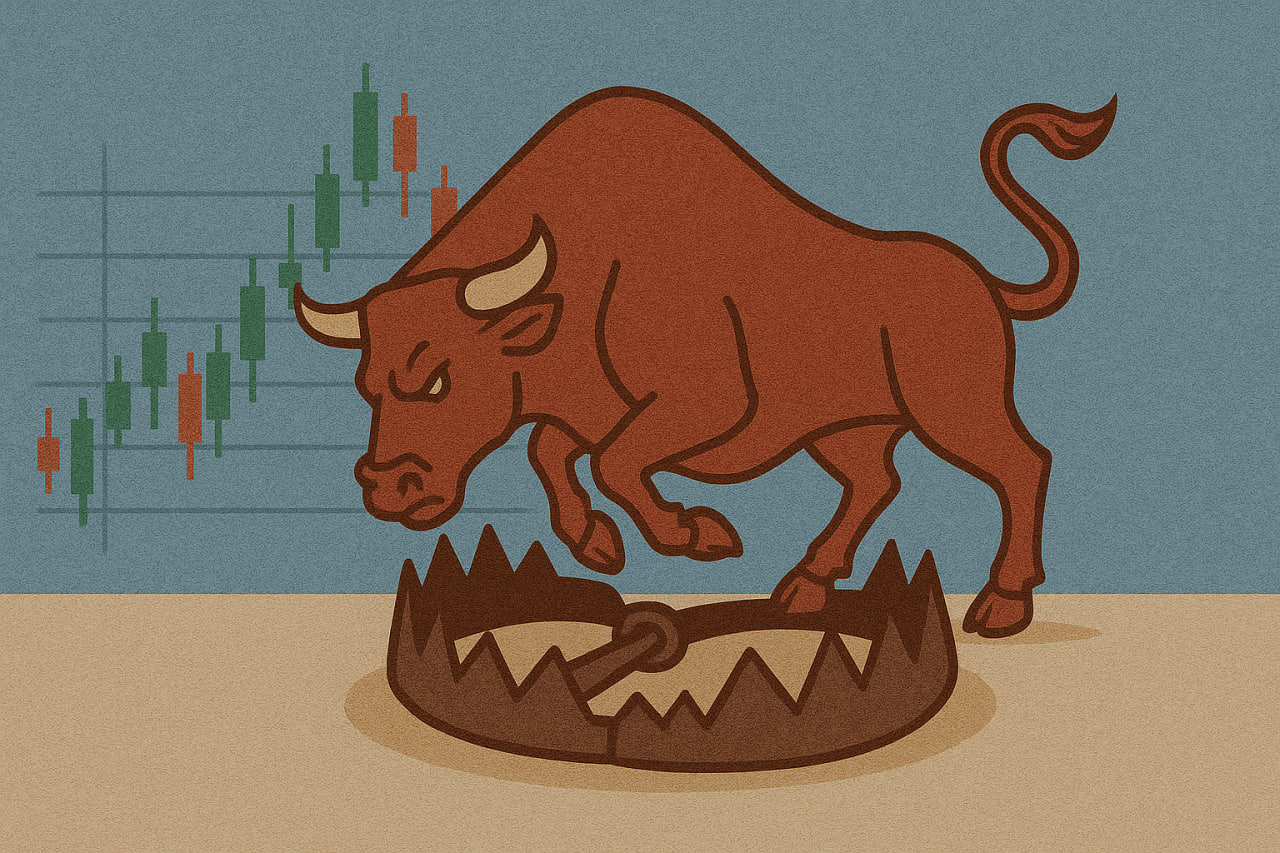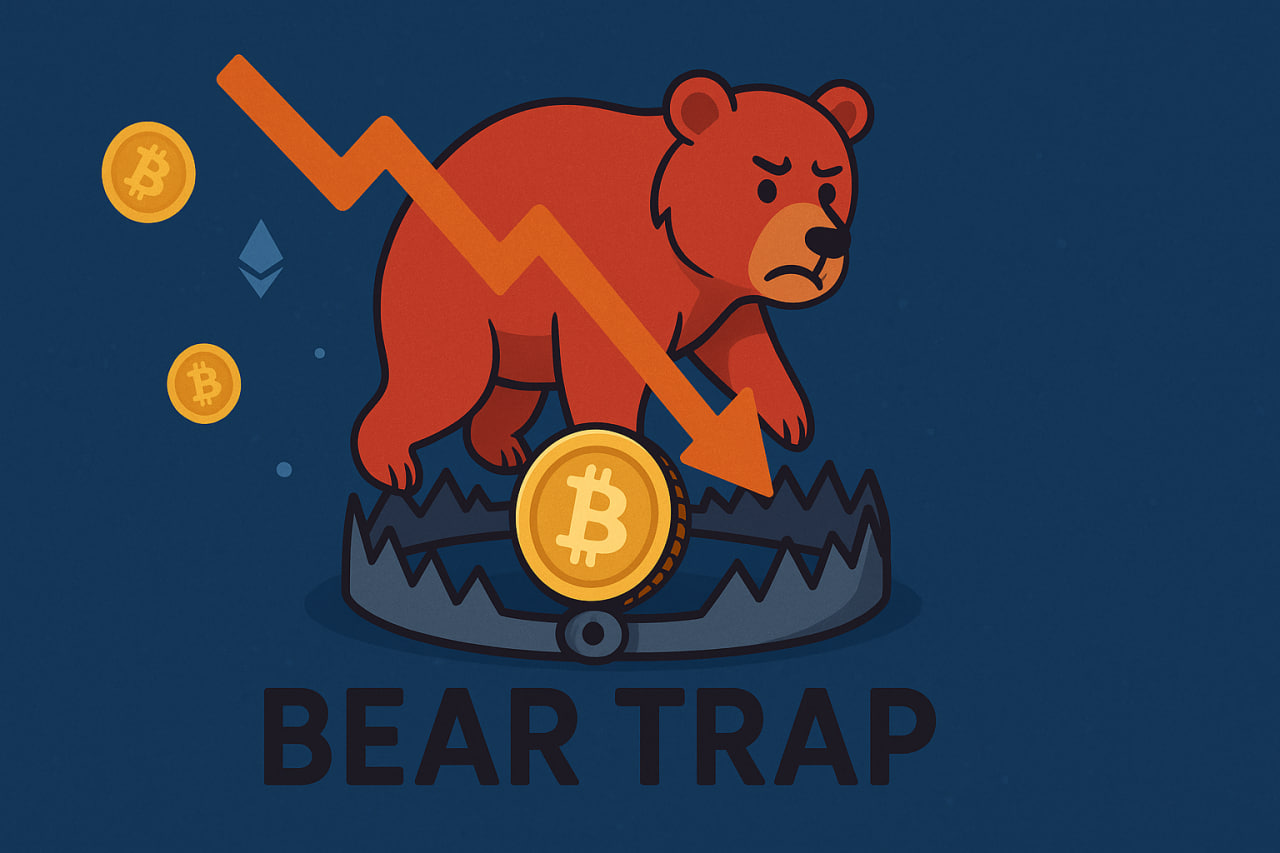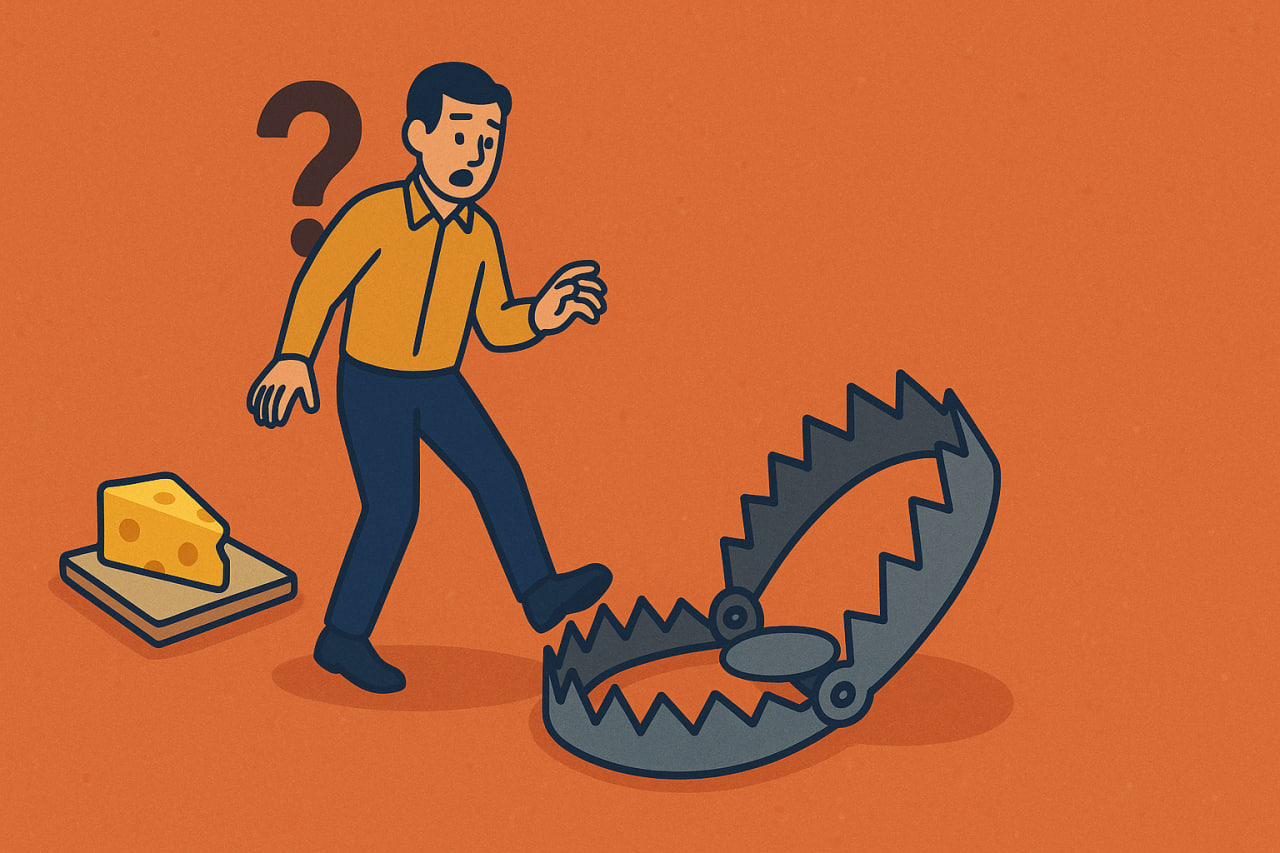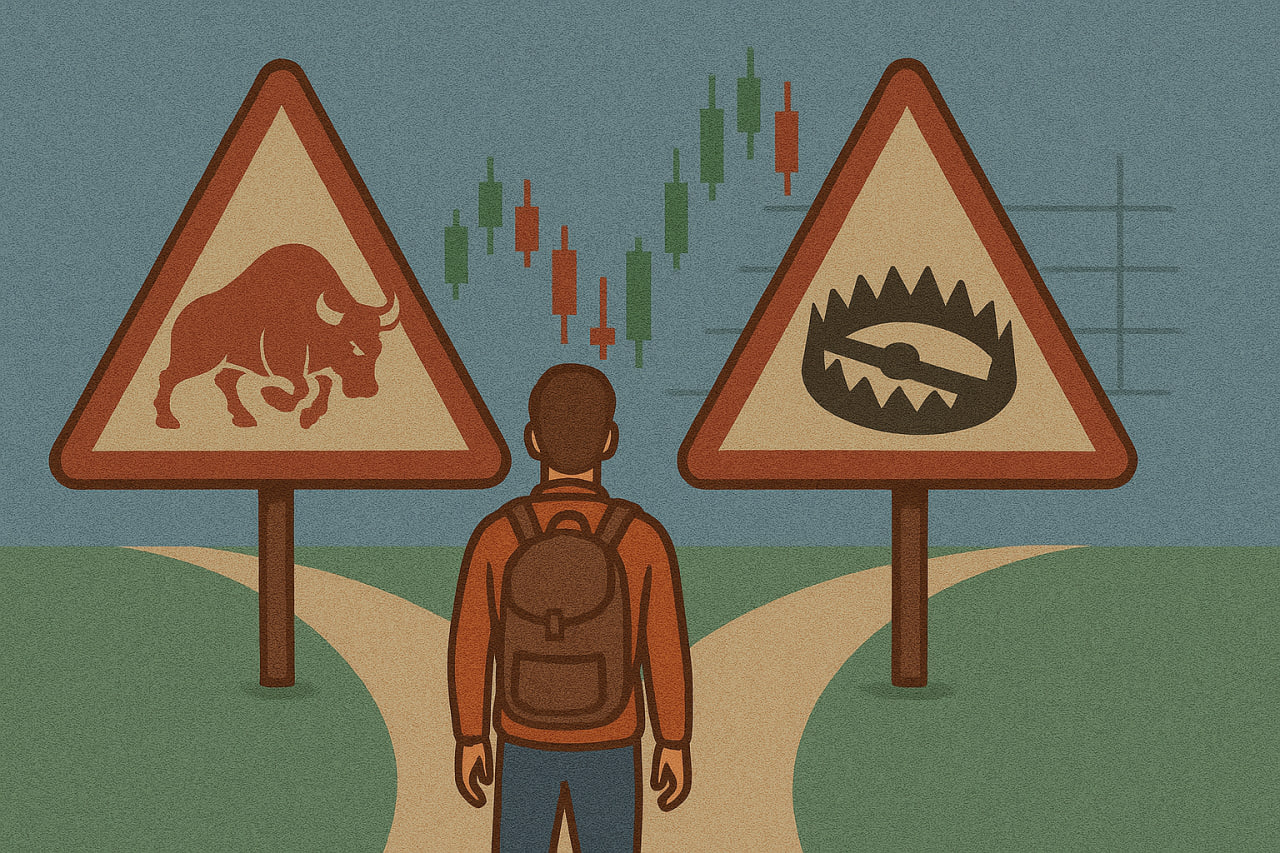How Bull and Bear Traps Work and Why We Keep Falling Into Them

Contents
- Introduction
- What Is a Bull Trap
- What Is a Bear Trap
- Why We Fall Into Traps
- How to Avoid Bull and Bear Traps
- Conclusion
Introduction
Bull and bear traps are among the most insidious phenomena in financial and cryptocurrency markets. They create the illusion of a sustainable trend, pushing traders and investors to make hasty decisions. As a result, people lose capital by falling into trading traps, even though they were hoping for profit.
Such situations occur not only in cryptocurrencies but also in the stock market. However, in digital assets, they gain particular strength due to high volatility. For successful trading, it is important not only to read charts but also to understand the psychology of the market, where the emotions of the majority often become fuel for traps.
What Is a Bull Trap

Definition and Mechanism
A bull trap is a situation where an asset’s price shows short-term growth, creating the impression of the start or continuation of an uptrend. In reality, this growth is false: the price quickly reverses downward, leaving participants with losing positions.
Such movements are often used in price manipulation in crypto, when large players force retail traders to buy the asset, only to crash it afterwards and buy back at lower prices.
Examples of Bull Traps in the Crypto Market
In cryptocurrency history, there are many cases where a crypto bull trap misled traders. For example:
-
Bitcoin’s rise in 2019 to $14,000, followed by a sharp fall to $7,000.
-
In 2021, a short-term spike to $58,000 before a drop to $30,000 was mistaken by many as the continuation of a bull trend.
How to Recognise a Bull Trap
To avoid such situations, it’s crucial to spot signals of an impending bull trap, including:
-
A sudden price increase on low trading volume.
-
Lack of trend confirmation on higher timeframes.
-
Divergences between price and indicators (such as RSI or MACD).
-
Excessive market optimism.
What Is a Bear Trap

Definition and Mechanism
A bear trap occurs when the price shows a strong decline, forcing investors to sell assets in panic. Soon after, the market reverses and resumes growth.
This behaviour often provokes crypto investor mistakes, especially among beginners who don’t use technical analysis and give in to emotions.
Examples of Bear Traps in the Crypto Market
Several situations illustrate a crypto bear trap:
-
Bitcoin’s sharp fall in spring 2020 to $4,000, when many investors sold, only for the market to recover and start a multi-year rally.
-
Altcoin crashes before major protocol upgrades, after which the price quickly rebounds.
-
Panic selling triggered by false news, such as supposed crypto bans in certain countries.
How to Recognise a Bear Trap
There are several indicators that help identify when a decline might be temporary:
-
Selling volumes don’t match the scale of the drop.
-
Price holds at key support levels.
-
After a sharp fall, reversal candlestick patterns quickly form.
-
Overall market trends and reversals don’t confirm further decline.
Why We Fall Into Traps

Trader Psychology
The main factor is human emotion. Greed, fear, and FOMO (fear of missing out) often drive people to wrong decisions. During growth, traders tend to ignore risks, while in decline, they succumb to panic.
Herd behaviour also plays a major role: when the majority is confident in growth or decline, traders act “like everyone else,” falling into pre-planned market traps.
Analysis and Strategy Mistakes
Another reason is a lack of knowledge and experience. The most common reasons why new crypto traders fall into such traps include:
-
Relying only on short-term charts.
-
Ignoring fundamental factors.
-
Underestimating risk management.
-
Using unverified signals from social media.
-
Lack of a clear trading strategy.
How to Avoid Bull and Bear Traps

Risk Management Strategies
Reliable risk management in trading helps minimise losses even when caught in a trap. Key methods include:
-
Setting stop-losses at critical levels.
-
Diversifying the portfolio across multiple assets.
-
Using only amounts one can afford to lose.
-
Opening positions in parts instead of a single full buy.
-
Creating a trading plan with predefined goals and risks.
Technical Analysis Tools
Applying technical analysis helps anticipate the probability of trend reversals. The most important tools are summarised in the table:
| Tool | What It Shows | When Useful |
|---|---|---|
| RSI | Overbought/oversold conditions | To detect false moves |
| MACD | Trend strength and divergences | To confirm reversals |
| Trading Volume | Real market activity | To filter manipulation |
| Support/Resistance Levels | Key price zones | For setting stop-losses |
| Moving Averages | Medium-term trend | To identify local and global directions |
Conclusion
Bull and bear traps are an integral part of the crypto market. They reflect both price mechanics and participant psychology, which makes them especially dangerous.
Learning how bull and bear traps work, studying past examples, and understanding why investors keep falling into them helps traders develop sustainable approaches. Combining risk management strategies, technical analysis, and mindful control of emotions reduces the chance of mistakes.
Ultimately, it is systematic discipline that allows traders to avoid unnecessary losses and turn traps from a threat into a source of valuable experience.